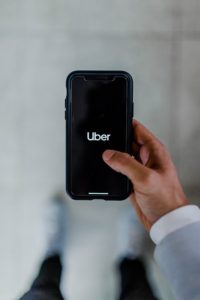
Dr Kelly Bertolaccini is an expert on transport equity and planning for vulnerable communities.
Limited transport options, low smartphone ownership and fewer people to offer rides means older Queenslanders, especially those outside of major cities, struggle to do their shopping, access healthcare services and socialise, a Griffith University report has found.
More than 130 older Queenslanders from major cities, regional towns and remote locations were interviewed about their transport behaviours and attitude towards using transport-related technology in a study led by Dr Kelly Bertolaccini from Cities Research Institute.
The report makes eight recommendations including prioritising the building of safe and accessible pedestrian networks, restructuring and expanding door-to-door transport options and making local councils responsible for distributing clear and accurate information about transport services older Queenslanders can expect as they age.
Dr Bertolaccini says the push for cashless payment and app-based services, accelerated by the pandemic, will become a significant barrier for older Queenslanders in the future.
“Among older people who were tech savvy, there is still a hesitation to use online banking or to use banking information to pay for things online or through apps,’’ she said.
“Older Queenslanders need resources and instructions on safe online banking and trusted, neutral spaces to ask technology questions.”
She said while transport is difficult for non-driving seniors across the state, there was a compounding effect for older Queenslanders in regional and remote locations.
“They reported smartphones were expensive, internet services were often unreliable and inessential to their lives.”
“We recommend all government-run transport services should continue to take cash payments for those people not comfortable with smartphone apps for the foreseeable future.”
Concern for online payment safety means taxis win over ridesharing apps

Older Qlders are reluctant to use online payments to pay for services like Uber. Photo: Austin Distel.
Participants also expressed a strong preference for taxis over rideshare services. Nearly all reported that they hired taxis by dialling a call centre and paid for the service in-vehicle, which is not offered by Uber.
“Taxi services are used primarily as a backup plan when a planned ride falls through or public transport is not reasonable, but the high cost of taxi fares is a barrier,” she said.
“Most taxi trips were for medical trips, and many in major cities and regional towns stated they wanted to see an expansion of the taxi subsidy scheme to include all people who are no longer able to drive.”
The lack of community and public transport options in regional areas and remote locations left many dependent on someone else or resorting to unsafe choices like driving themselves, sometimes against a doctor’s advice.
“Accessing healthcare is particularly challenging and costly for non-drivers. It is impossible to make a return to the regional hospital in a single day by public transport and many need to pay for several nights lodging on top of transport costs.”
Age, Transport and Technology report recommendations
- Prioritise the building of safe and accessible pedestrian networks.
- Restructure and expand affordable, door-to-door transport options for older Queenslanders.
- Explicitly consider the location of retirement and aged care facilities when designing public
transport routes. - Consider restricted licensing over full removal of license.
- Provide older Queenslanders with clear, accurate information about the transport services
they can expect to receive as they age. - Provide older Queenslanders with accurate information on protecting sensitive information
online and safe online banking. - Create neutral, trusted spaces where older Queenslanders can ask technology questions
one-on-one. - Educate relevant government and healthcare workers on the disparities in technology use
and availability between urban and rural areas.
